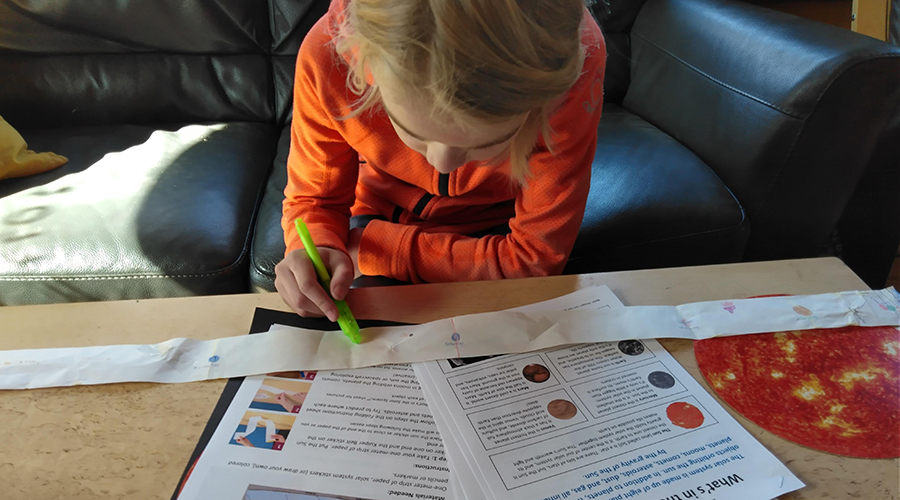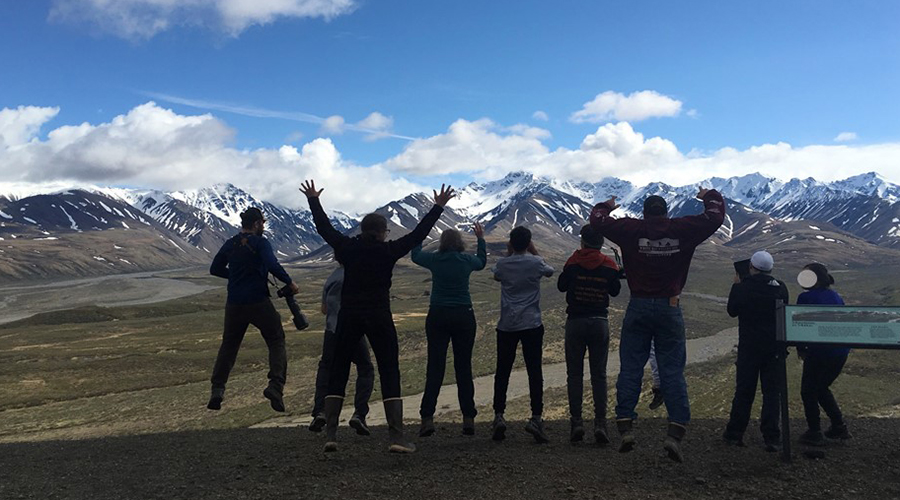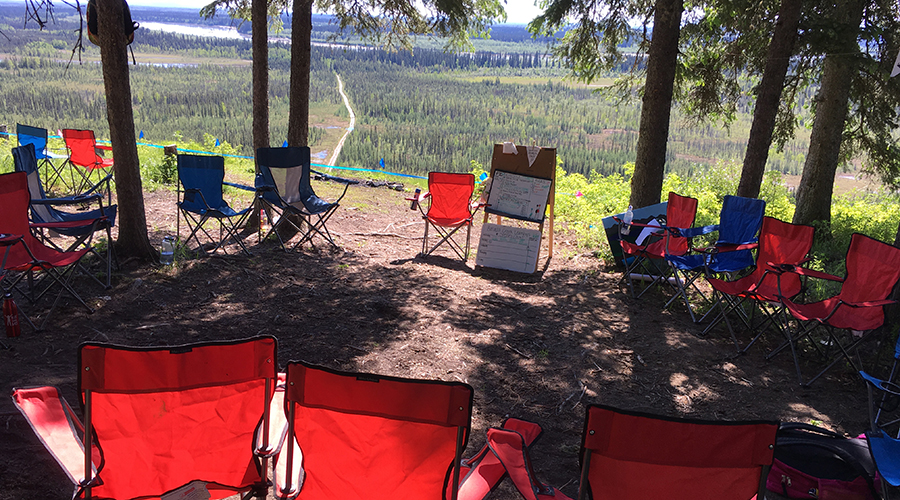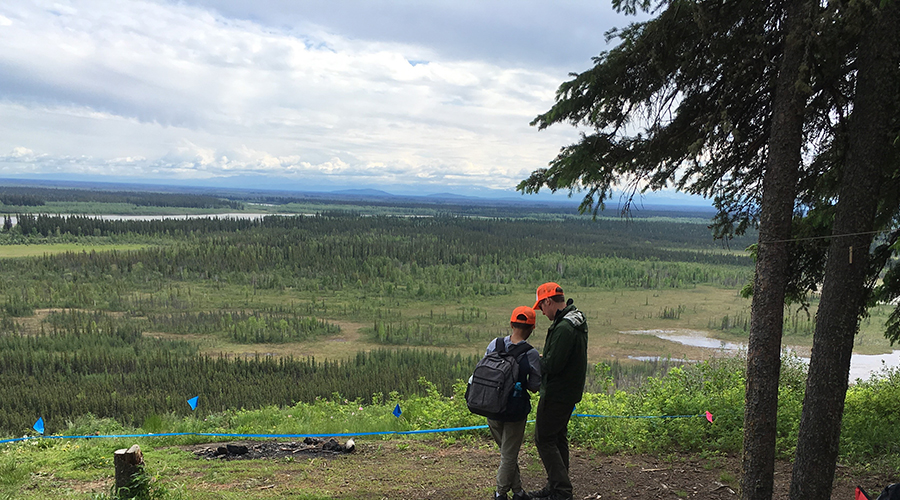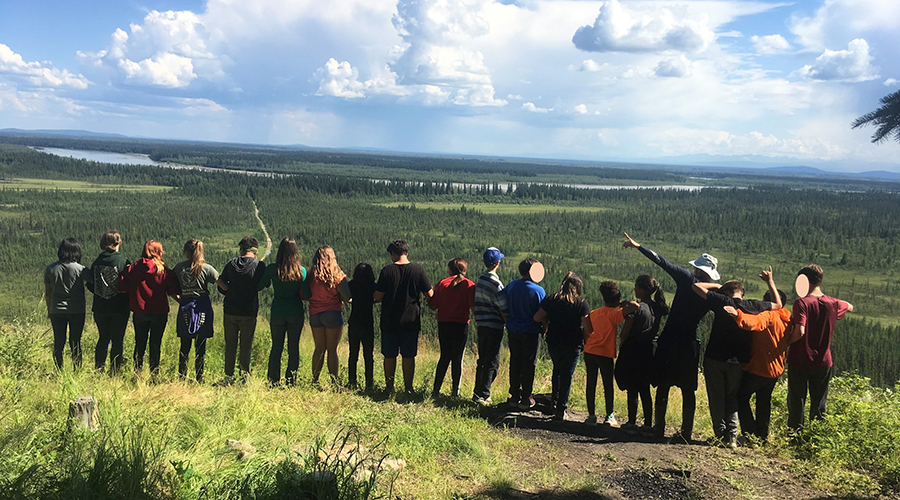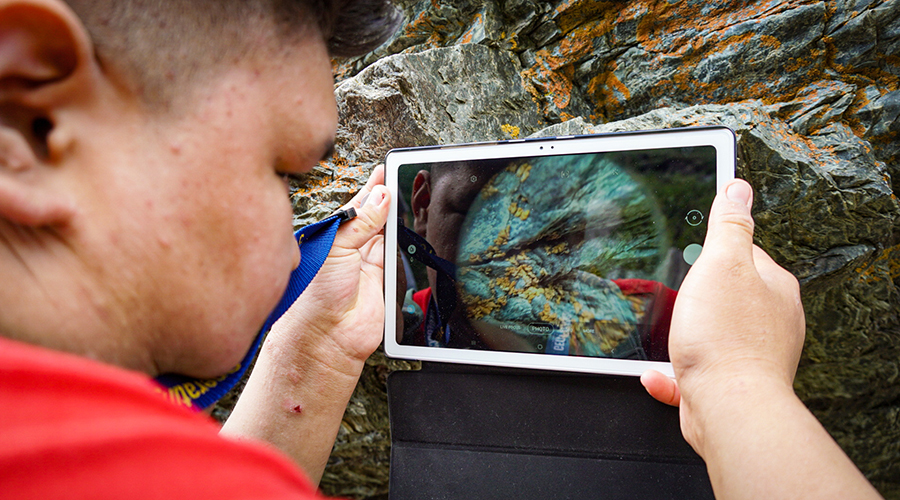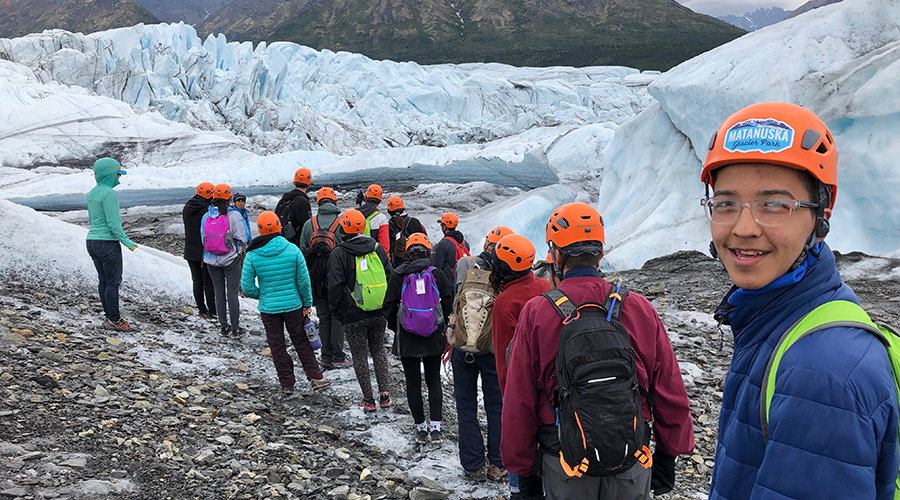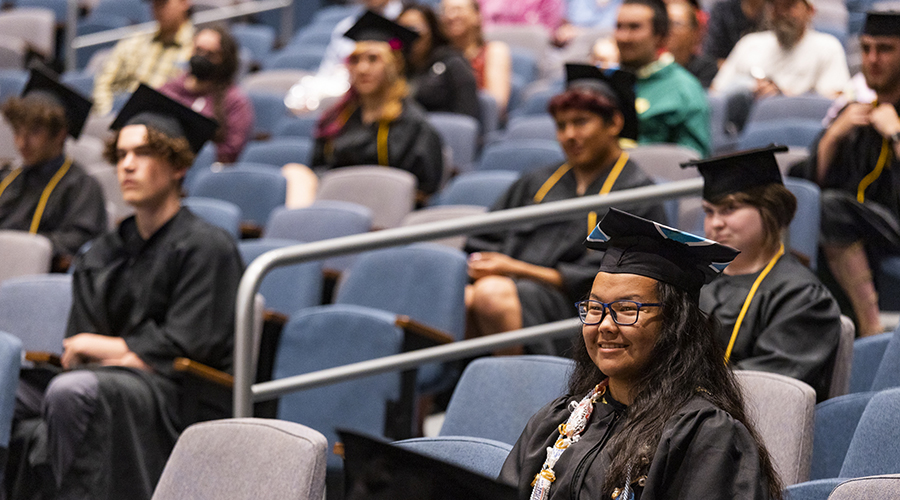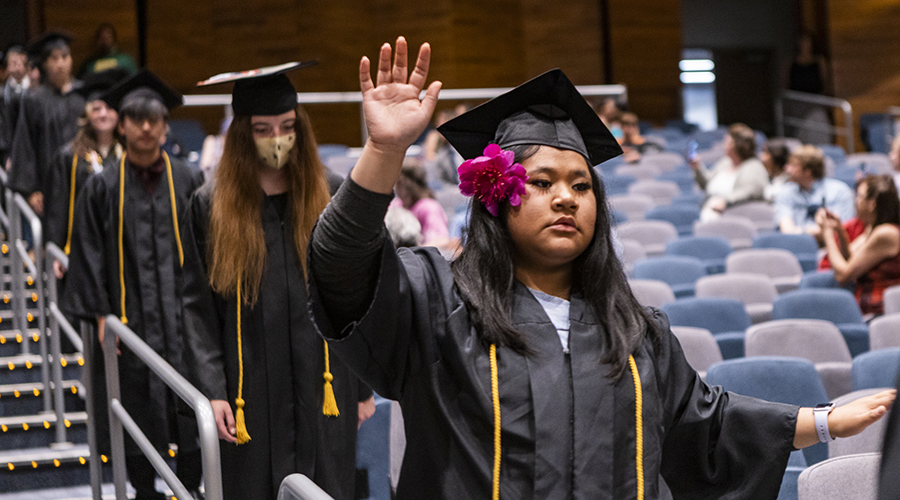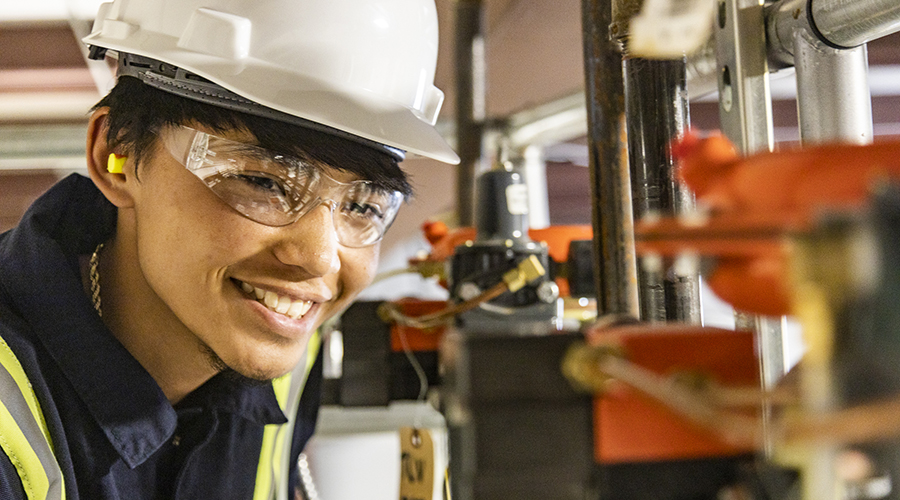Donors contribute to educational pathways for Alaska’s youth
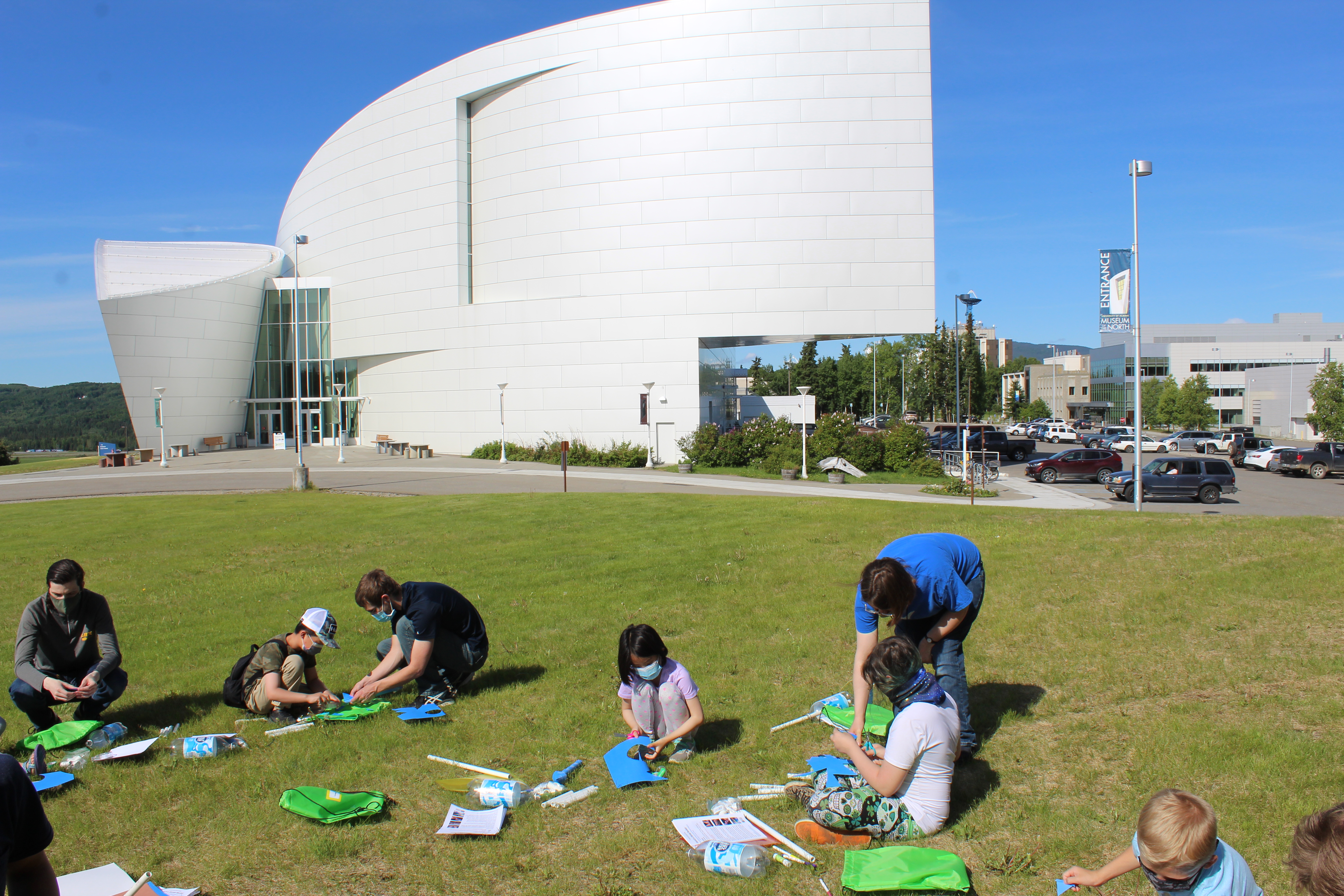
Participants in the University of Alaska Museum of the North's Space Camp assemble rockets and launch systems outside the museum in summer 2021.
Getting involved with programs on the UAF Troth Yeddha' campus in Fairbanks helps spark curiosity for K-12 students. They develop a sense of belonging and discover pathways to a college degree, leading to a bright future.
UAF offers a multitude of programs for young people — from summer camps to pre-college prep. UAF faculty, staff and students provide the energy and passion, but often it takes philanthropic support from donors, corporate partners and private foundations to make these programs possible.
Thanks to the support from Dr. Walt and Marita Babula, the UA Museum of the North held the Virtual Space Camp for elementary school-aged children over the summer. Students learned about the aurora, eclipses, the solar system and the universe. They even built and launched their own rockets. It was well received, “a highlight of the pandemic” for one family.
A visit to UAMN may be the first on-campus experience for local K-12 students and can set the stage for lifelong learning. Other youth programs offered through UAF focus on students who may be at higher risk of not finishing high school or being overwhelmed by the transition to college life.

Fostering Science participants track snowshoe hares at the Bonanza Creek Long-Term Ecological Research site in summer 2021
The Fostering Science program at the UAF Institute of Arctic Biology provides a fun, science- and art-filled experience for youths in foster care. The program takes place at the Bonanza Creek Long-Term Ecological Research site. One participant shared that the camp provided an opportunity to learn about “all kinds of scientific things” and was a way to connect with foster kids of the same age.
Fostering Science has been fueled by help from local agency researchers, small grants and volunteers. Notably, support for the program during the next two years will come from the Doug Schamel Memorial Endowment.
Two other programs bring Alaska youths to UAF and introduce them to faculty, staff and students. The GeoFORCE Alaska program is offered through UAF’s College of Natural Science and Mathematics, and the Rural Alaska Honors Institute is offered by UAF’s College of Rural and Community Development.
GeoFORCE Alaska is a four-year program offered to rural high school students from the North Slope, Northwest Arctic and Interior Alaska. Students travel to experience hands-on field projects around Alaska and throughout the country, learning about geology and career paths in geosciences.
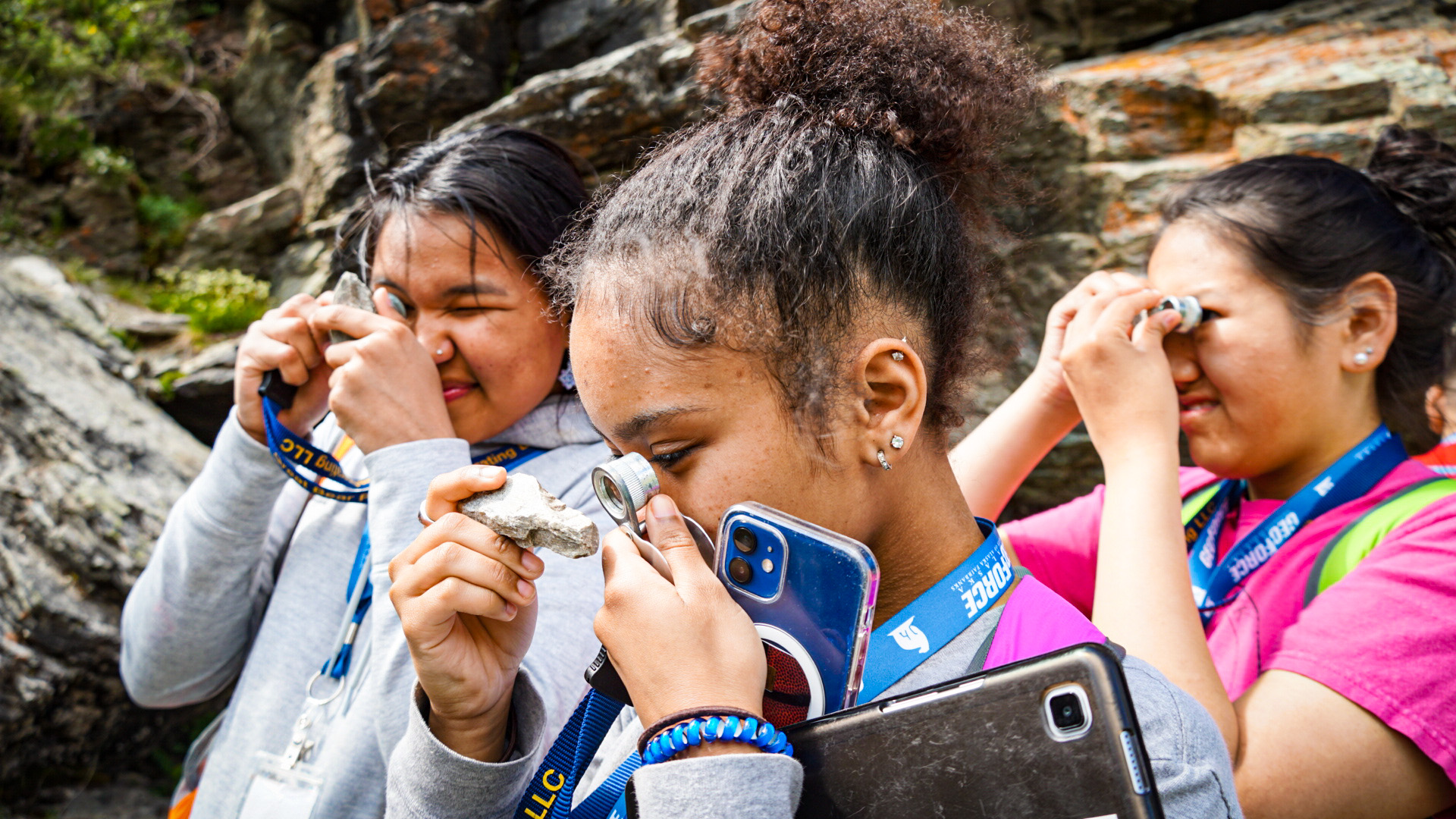
From left, Tatyana Nahookpuk, Kiara Burnell and Allana Nageak, all GeoFORCE students from the North Slope, examine metamorphic rocks in Denali National Park and Preserve in summer 2021.
Sarah Fowell, GeoFORCE Alaska director, said the program aims to increase diversity and representation in Alaska’s workforce, especially in positions filled by college graduates in Alaska industries and regional Native corporations.
“Support from donors is critical,” she said. “We have National Science Foundation funding that has certainly provided a useful buffer, but the NSF goal is always for the program to be self-sustaining, and self-sustaining relies on our donors.”
GeoFORCE Alaska has an extensive list of supporters who make significant gifts, including Arctic Slope Regional Corporation, NANA Regional Corporation and Doyon, Limited. Funding from those three Alaska Native corporations enables youths from their regions to attend the program. ExxonMobil Foundation, ConocoPhillips Alaska and, more recently, several mining companies, including Teck Alaska, Trilogy Metals and Ambler Metals, have also been instrumental in keeping GeoFORCE Alaska running. This year, the Arctic Slope Community Foundation contributed to the program, and the Schmidt Charitable Trust provided funding to buy tablets for the participants to help them expand skill sets – like functioning in a digital environment.
Bringing students to college has been the mission of UAF’s RAHI program for nearly 40 years. For six action-packed weeks, rural and Alaska Native high school juniors and seniors come to the Troth Yeddha’ Campus in Fairbanks to learn what it is like to be a college student. Participants earn eight to 11 university credits, a jump-start for their college careers. This year, RAHI offered four tracks: traditional, research, teaching and health.
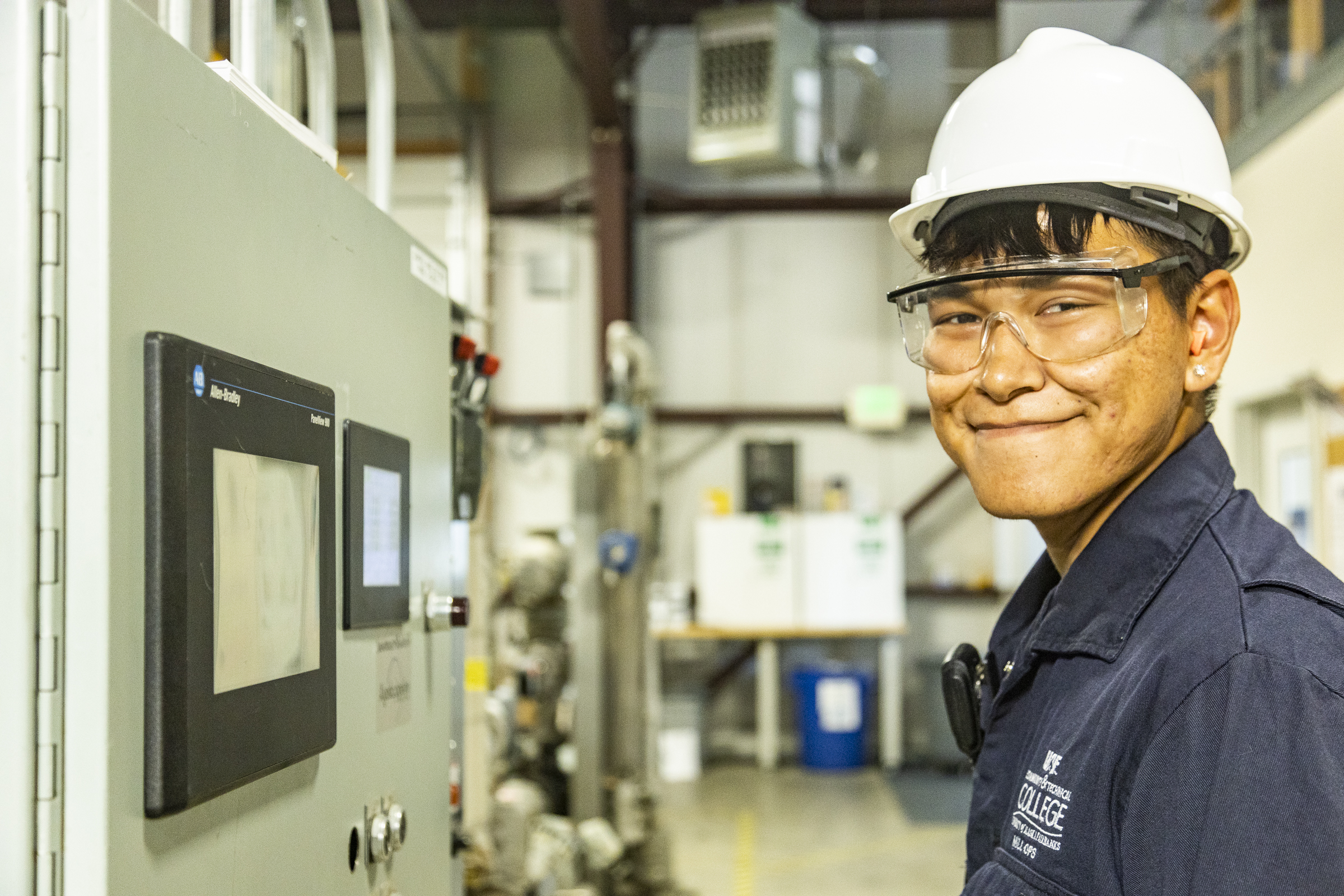
Svenson Paukan of St. Marys studies process technology during the 2021 Rural Alaska Honors Institute at UAF.
Brianna Pauling, RAHI program manager, said she wants students to become comfortable on a college campus and to grow socially and academically.
“It’s awesome to see students come out of their shell,” she said. “They get comfortable reaching out for resources on campus, asking questions and developing relationships with their instructors and peers.”
This summer, RAHI graduated 51 students, but the number of students that enter the program each year depends on funding.
“The impact of donor support is pretty substantial,” Pauling said. “We wouldn’t have been able to offer the health track this year without the support of the Tanana Chiefs Conference.”
Other notable donors to RAHI include Alyeska Pipeline Service Company, First National Bank Alaska and Wells Fargo, as well as the estate of Ruth Galaid. These partners, among many others, support the traditional track, where students can take courses such as process technology, business and chemistry.
RAHI alumni have gone on to earn more than 1,200 certificates and degrees, including 149 master’s degrees and six doctorates. But, like many UAF youth programs, success in RAHI is measured in more than future degree completions. It is also about personal and social development and the impact these programs have on the culture of education throughout Alaska.
“Our RAHI alumni are so loyal to our program and what it did for them that they go home and tell their friends and family,” Pauling said.
This can be seen in the generations of students whose parents participated in RAHI and whose siblings have also attended. People want to spread the word and give others the opportunity to benefit from the program.
Summer ’21 RAHI graduate Bjorn St. Clair of Juneau is especially thankful for the philanthropic support.
“With this program, I feel so much more confident in my ability to go to college,” he said. “I know for some of the companies that donate, it may seem that the money could be used for better things, but building this program helps the people of Alaska in a very meaningful way.”





